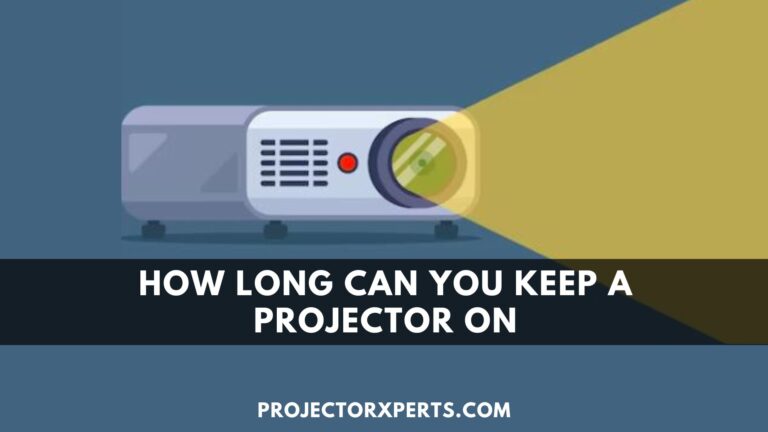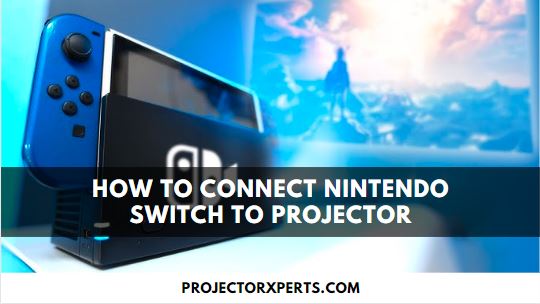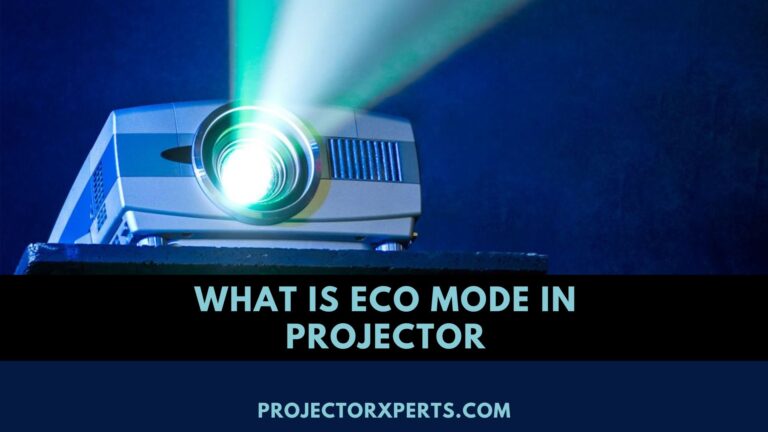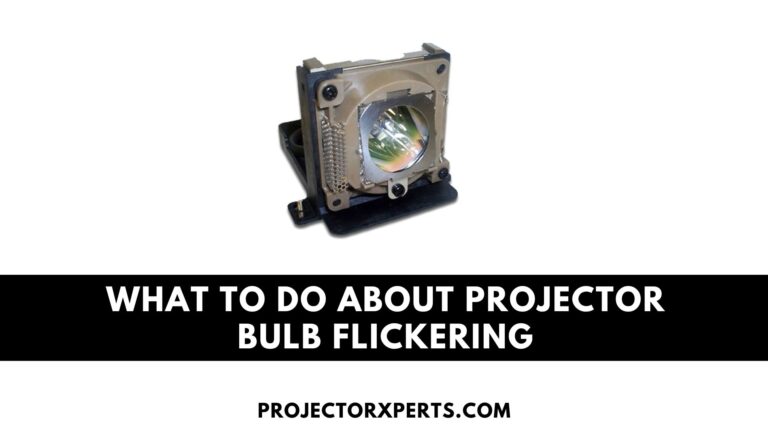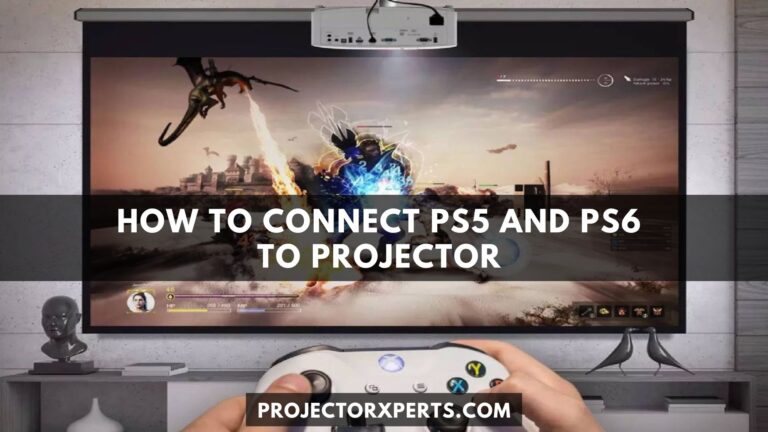Does the Projector Have Blue Light Filter?
In an era dominated by digital screens and electronic devices, the concern for eye health has never been greater. Among the various sources of eye strain and discomfort, blue light emitted by screens has become a significant topic of discussion. As projectors continue to find their way into various aspects of our lives, from classrooms to conference rooms and home theaters, the question arises: “Does the projector have a blue light filter?”
In this informative exploration, we delve into the world of projectors and their potential impact on our eyes. We will unravel the concept of blue light filters, understand their functionality, and explore the advantages they offer in terms of eye protection and visual comfort. Moreover, we will investigate whether modern projectors commonly incorporate this crucial feature and what factors might influence its presence.
Whether you are a professional presenter, a movie enthusiast, or an educator utilizing projectors in your daily activities, this content aims to provide valuable insights and contextually appropriate information. By the end of this journey, you will be equipped with the knowledge to make informed decisions about projector choices and how best to protect your eyes during extended viewing sessions.
How Blue Light Filters Work in Projectors
The exact implementation of blue light filters can vary based on the projector’s technology. For LCD projectors, which are common in the market, the filters are integrated into the projector’s optical system. These filters consist of specialized materials that absorb or reflect a portion of the blue light.
On the other hand, DLP and LED projectors may employ different techniques to achieve similar results. Some DLP projectors may use a color wheel with a modified segment to reduce blue light emission, while LED projectors might utilize specific phosphor coatings or color temperature adjustments to achieve the desired effect.
Regardless of the technology, the aim remains the same: to create a more eye-friendly viewing experience without compromising image quality.
Understanding Blue Light Filters in Projectors
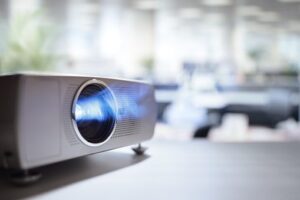
Definition of Blue Light Filters in Projectors
A blue light filter is a feature incorporated into electronic devices, including projectors, to reduce the amount of high-energy blue light emitted from their screens. Blue light is part of the visible light spectrum and is emitted by various sources, such as the sun, digital screens, and artificial lighting. Studies have shown that prolonged exposure to blue light, especially at night, can disrupt sleep patterns and cause eye strain, fatigue, and potential long-term harm to the eyes.
Functionality and Benefits of Blue Light Filters
The primary function of a blue light filter is to reduce the intensity of blue light emitted by a projector’s light source. These filters work by selectively blocking the shorter, high-energy wavelengths of blue light while allowing other colors to pass through. By doing so, blue light filters help in reducing the amount of blue light that reaches the eyes, thereby minimizing eye strain and discomfort during extended projector use. Furthermore, blue light filters contribute to better sleep quality, as they can help regulate the body’s production of melatonin, the sleep hormone. When using projectors with blue light filters, especially in dark environments, users may find it easier to fall asleep after extended viewing sessions.
Do Projectors Generally Have Blue Light Filters?
Industry Standards and Regulations
In recent years, there has been a growing awareness of the potential health risks associated with prolonged exposure to blue light from electronic devices. As a result, some countries and regions have introduced guidelines or standards regarding blue light emission in electronic devices, including projectors. Manufacturers often adhere to these standards voluntarily to meet consumer demands for eye protection.
Common Features Found in Modern Projectors
Modern projectors often come equipped with features geared towards eye protection and user comfort. While not all projectors may explicitly mention “blue light filter” as a feature, they may offer similar functionalities under different names. For instance, “eye care mode,” “low blue light mode,” or “color temperature adjustment” are terms that manufacturers use to describe the incorporation of blue light filtering technology in their projectors.
Manufacturer’s Specifications and Product Descriptions
When considering a projector, potential buyers can refer to the manufacturer’s official website or product manuals for information about blue light filters. Manufacturers usually highlight eye protection features in their product descriptions, explaining how their projectors reduce blue light emission and promote a more comfortable viewing experience.
Factors Influencing Blue Light Filter Presence
Different Projector Types and Their Filter Capabilities
The presence and effectiveness of blue light filters can vary depending on the type of projector technology used. For instance, LCD projectors, being transmissive devices, generally have a better capability to incorporate effective blue light filters due to their optical design. On the other hand, DLP and LED projectors, being reflective devices, may have some inherent advantages in terms of reduced blue light emission, but their filtering methods may differ.
High-end vs. Budget Projectors
Variations in Features
High-end projectors often prioritize user comfort and eye protection, and they are more likely to have advanced blue light filtering technology. Conversely, budget projectors may focus on essential features without extensive eye protection mechanisms, although they still may have some basic blue light reduction settings.
User Preferences and Special Applications
The need for blue light filters can vary based on individual preferences and the intended use of the projector. Some users might prioritize eye protection and opt for projectors with advanced blue light filtering, especially if they plan to use the projector for extended periods or in dimly lit environments. Others, who may use projectors primarily for presentations or daytime viewing, might not see blue light filters as a crucial factor in their decision-making process.
Advantages and Disadvantages of Blue Light Filters in Projectors
Benefits of Using Projectors with Blue Light Filters
Using projectors with blue light filters offers several advantages for users, particularly in terms of eye health and overall viewing experience. Some key benefits include:
Reduced Eye Strain
Blue light filters help alleviate eye strain, dryness, and discomfort that can occur during extended projector use, making viewing sessions more comfortable.
Improved Sleep Quality
By reducing exposure to blue light, especially during evening or nighttime use, projectors with blue light filters can contribute to better sleep patterns and improved overall sleep quality.
Enhanced Eye Protection
Blue light filters help protect the eyes from potential long-term damage caused by prolonged exposure to blue light, reducing the risk of eye-related issues.
Better Visual Comfort
Users often experience a more relaxed and pleasant viewing experience with blue light filters, especially during extended presentations, movie nights, or gaming sessions.
Drawbacks or Limitations of Having a Blue Light Filter
While blue light filters provide significant advantages, it’s essential to consider some potential drawbacks:
Color Distortion
In some cases, blue light filters might slightly alter color perception or image quality. However, modern projectors usually employ sophisticated filtering mechanisms to minimize any noticeable color distortion.
Impact on Brightness
Activating a blue light filter may slightly reduce the projector’s brightness, which could be a concern when using the projector in well-lit environments. However, most projectors offer adjustable settings to balance brightness and eye protection.
User Preference
Some individuals might not prefer the warmer color temperature introduced by blue light filters, as it deviates from the projector’s default color settings. However, preferences can vary, and users can often customize or adjust filter settings to suit their comfort level.
Related:
How to Check if a Projector Has a Blue Light Filter?
Steps to Find Information about the Presence of a Blue Light Filter
Read the Product Specifications
Check the projector’s official product page or user manual for any mention of eye protection features, blue light reduction, or similar functionalities.
Review Expert Reviews and User Feedback
Online reviews or user feedback can often provide insights into whether a specific projector incorporates blue light filters and how effective they are in practice.
Visit Manufacturer’s Website
Manufacturers may provide detailed information about their projector’s features, including blue light filters, on their official website.
Online Resources and Databases for Projector Specifications
There are several websites and databases that compile projector specifications, where users can search for information regarding blue light filters. Some popular resources include consumer electronics websites, tech forums, and projector-focused online communities.
Contacting Manufacturers or Customer Support for Clarification
If the available information is unclear or insufficient, reaching out to the manufacturer’s customer support can be helpful. Manufacturers often welcome inquiries and can provide specific details about blue light filters in their projectors.
Frequently Asked Questions
Does the projector have a blue light filter?
Yes, the projector is equipped with a blue light filter to reduce the potential harmful effects of blue light exposure. This feature is particularly useful for those concerned about eye strain and sleep disruption caused by prolonged exposure to blue light.
How does the blue light filter work on the projector?
The blue light filter on the projector works by adjusting the color temperature of the light emitted, reducing the amount of blue light in the projection. This makes the projected image warmer in color and less harsh on the eyes.
Can I customize the blue light filter settings on the projector?
Absolutely, most projectors with blue light filters offer customizable settings. You can often adjust the intensity of the filter to suit your preferences and the specific lighting conditions in your environment.
Is there a night mode or scheduling feature for the blue light filter?
Many projectors offer a night mode or scheduling feature that automatically activates the blue light filter during evening hours to help improve sleep quality. This is particularly helpful if you use the projector for late-night entertainment.
Will the blue light filter affect the color quality of the projection?
While the blue light filter does alter the color temperature, it’s designed to minimize the impact on image quality. You should still enjoy vibrant and accurate colors while reducing blue light exposure.
Is it possible to turn off the blue light filter if I prefer a cooler color temperature?
Yes, you can usually toggle the blue light filter on and off according to your preference. So, if you prefer a cooler color temperature for certain content or during the day, you have that flexibility.
Conclusion
In conclusion, blue light filters in projectors play a crucial role in safeguarding users’ eye health and enhancing their overall viewing experience. While not all projectors may explicitly label their feature as a “blue light filter,” many modern projectors come equipped with similar eye protection functionalities. Checking the projector’s product specifications, reading reviews, and seeking information from manufacturers can help users make informed decisions based on their preferences and specific needs. Whether it’s for presentations, entertainment, or professional use, considering a projector with blue light filtering capabilities is a worthwhile step towards promoting healthier and more enjoyable viewing experiences. Remember to prioritize your eye health and well-being while enjoying the benefits of modern projection technology.

